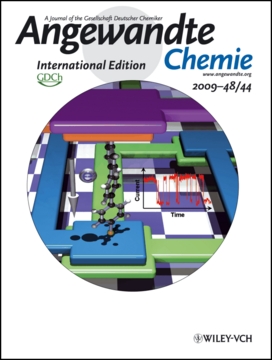
In a collaboration with the Laboratoire d'Electronique Moléculaire, CEA Saclay, the controlled stability of molecular junctions has been studied. The work is presented on the cover of Angewandte Chemie International Edition, issue 44/2009O.The original paper: D. Dulic, F. Pump, S. Campidelli, P. Lavie, G. Cuniberti, and A. Filoramo, "Controlled Stability of Molecular Junctions", Angewandte Chemie International Edition 48, 8273 (2009).

In a collaboration with the Laboratoire d'Electronique Moléculaire, CEA Saclay, the controlled stability of molecular junctions has been studied. The work is presented on the cover of Angewandte Chemie International Edition, issue 44/2009O.The original paper: D. Dulic, F. Pump, S. Campidelli, P. Lavie, G. Cuniberti, and A. Filoramo, "Controlled Stability of Molecular Junctions", Angewandte Chemie International Edition 48, 8273 (2009).